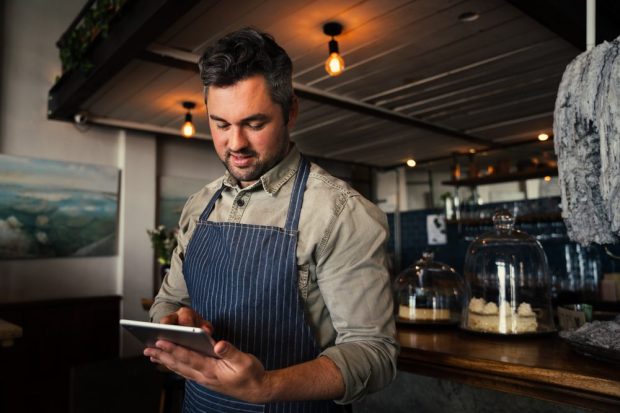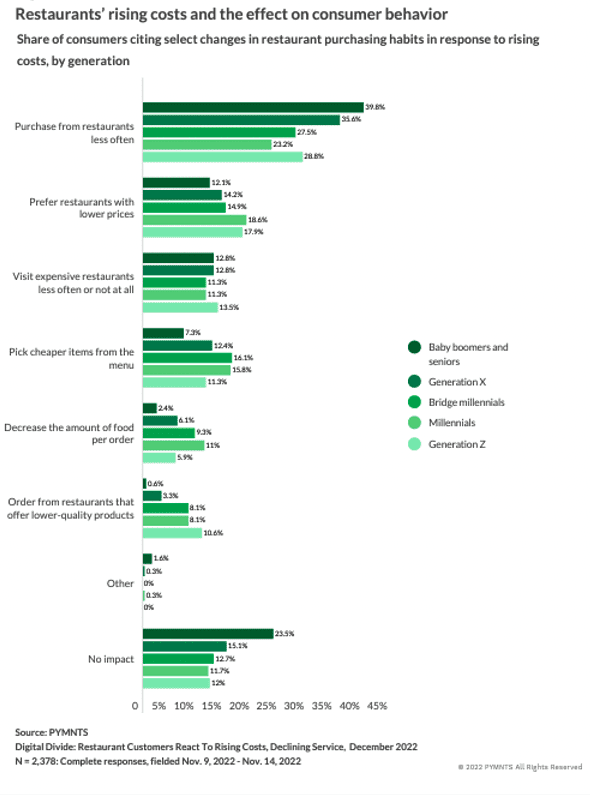Slipping Restaurant Sales Lead to Cost Cutting

With lower restaurant sales, dining establishments may need to consider new cost-cutting strategies.
Nearly all businesses are battling the economy’s continued inflationary cycle, coupled with dim consumer sentiment about when that cycle might end. However, eateries face their own particular issues as restaurant sales decline, as detailed in the latest PYMNTS report on the current state of dining out, “The 2022 Restaurant Digital Divide: Restaurant Customers React to Rising Costs, Declining Service.”
The cost of eating outside the home in October rose an average 8.6% year over year, compared to the overall 7.7% cost-of-living increase during the same period. As a result, approximately one-third of consumers are eating out less frequently, with baby boomers and seniors cutting back the most.
However, consumers have seen an even larger increase in their restaurant checks than the official numbers suggest. Customers have seen their bills jump 24% — more than triple the Consumer Price Index’s measure of the increased cost of dining outside the home.
Rising costs, coupled with customers’ tighter budgets, have affected the behavior of consumers who dine out. Four in 10 restaurant customers said price influenced their last meal purchase.

Restaurant service quality has also suffered because of cost-cutting measures. Among consumers who paid $50 or more per person in their last restaurant purchase, 46% considered service quality in their choice of establishment. Speed of service is a big factor, with 34% of consumers overall saying restaurants are taking longer to process orders. And when their meals do arrive, the dining experience falls short of pre-pandemic experiences. Twenty-seven percent of consumers overall said restaurants’ service has declined, and 16% said the food does not taste as good.
As most customers believe that inflation won’t fully end until June 2024, restaurants may need to implement new strategies to retain their margins. Beyond cost cutting, some restaurants are exploring invoice and other back-office automation using third-party platforms.
One such platform, MarginEdge, specializes in automated invoice processing. In an interview with PYMNTS’ Karen Webster, CEO Bo Davis explained the importance of these types of platforms.
“If you think about the restaurant, it’s got, say, 25, 30 invoices coming in,” he said. “They’re buying on average, 500 to 600 different things … All of those items’ prices are changing. And so, [we] extract the line-item data — rather, your percentage costs, which is how restaurants traditionally have managed their food costs, they can see item by item [where] they need to focus.”
Additional solutions may include implementing other methods of accounts payable (AP) automation or even collaborating with other eateries.
With the current economic headwinds at play, restaurants face the challenge of using cost-cutting strategies while maintaining customer loyalty — and their margins.
